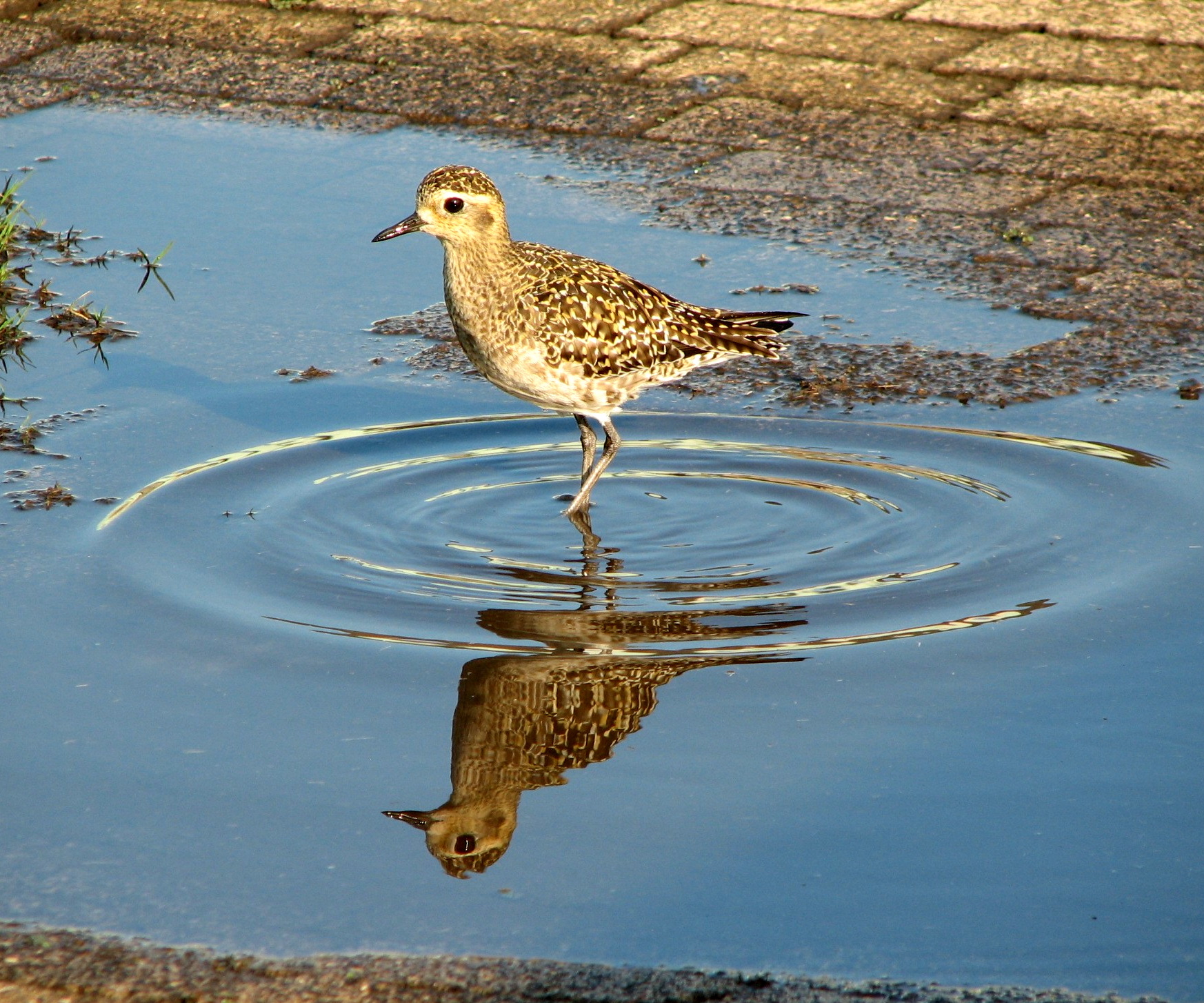
This Maui Kolea enjoyed bathing in a driveway rain puddle. © Photo courtesy Calvin M. Kaya, Ph.D., Professor Emeritus of Biology, Montana State University
January 9, 2022
Kona storm? Bring it on, say the Kolea who relish the worms and bugs the rain brings to the surface. Our Kolea are a hardy species, as are the plover lovers who went out to count and observe during the blustery weather.
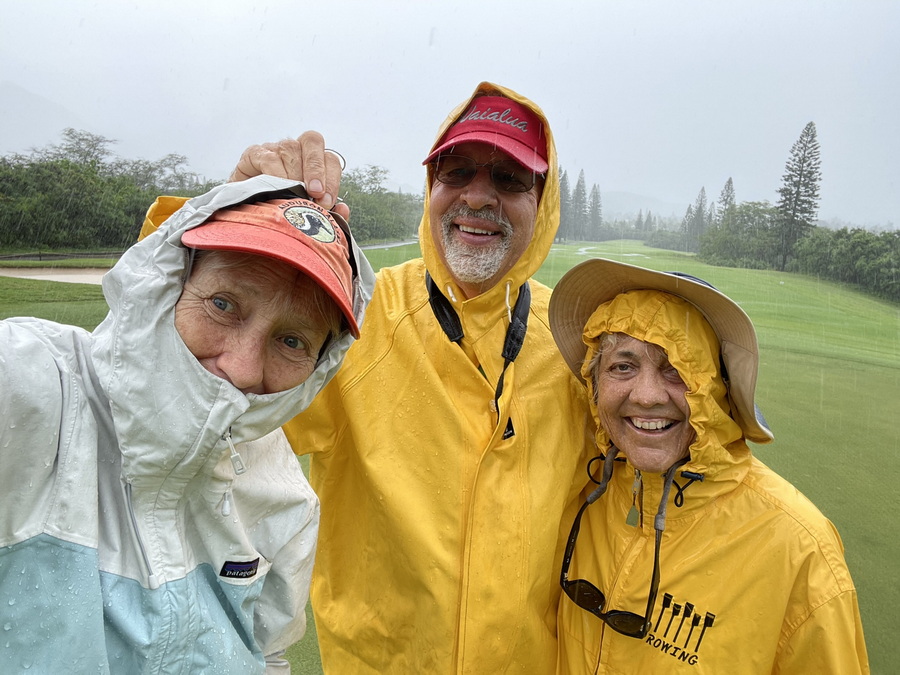
Craig is showing off the Pacific Golden-Plover patch on my Alaska Audubon hat, a special gift. Friend and neighbor Lani Twomey braved the storm to count Kolea with us. (Selfie)
On Christmas Day, four of us took advantage of Mid-Pacific Golf Course’s holiday closure, and counted 85 Kolea, our plan being to count again on the second closure of the year, New Year’s Day. When the day came, though, a Kona storm had turned the golf course into a giant lake fed by drainage-ditch rivers so large they had standing waves.
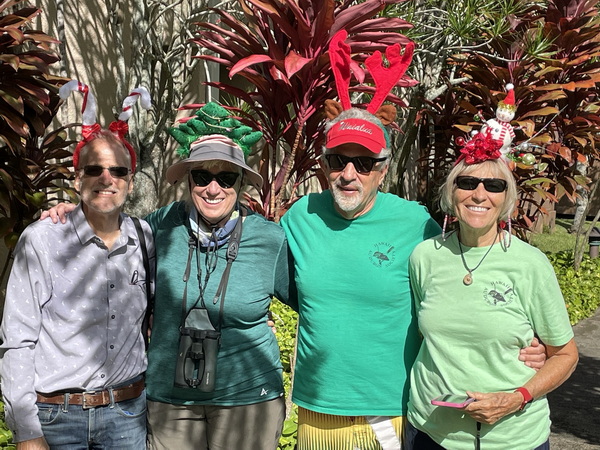
The Christmas Day Kolea team from right, David Johnson. Beth Flint, Craig Thomas and me, Susan Scott. Photo by Michelle Hester
We set out anyway, counting 132 Kolea, and a surprising number of endemic stilts, gallinules and coots, all gorging on drowning invertebrates. Ducks too loved the sodden landscape.
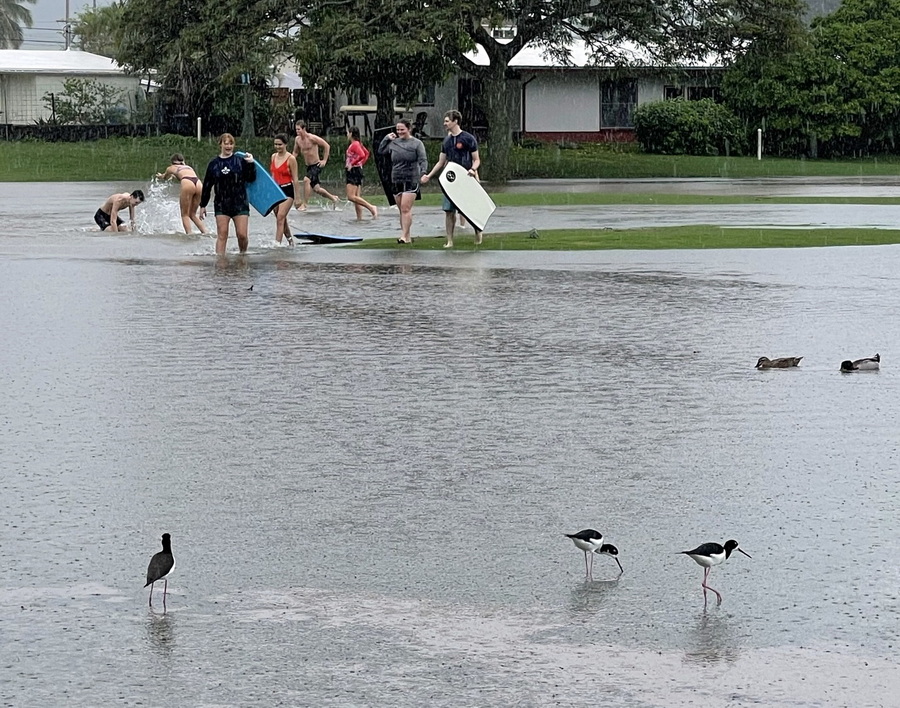
During the storm, stilts, ducks and people enjoyed the temporary lake on this fairway. © Susan Scott
So far, for the 2021-2022 Kolea Count project, 79 people have counted 1,440 Kolea. Most are on Oahu but several are counting on the Big Island and a few on Maui. (I heard from a counter on Kauai who will soon enter her numbers.) I have friends currently working at Midway who lost track of the Kolea count at 500.
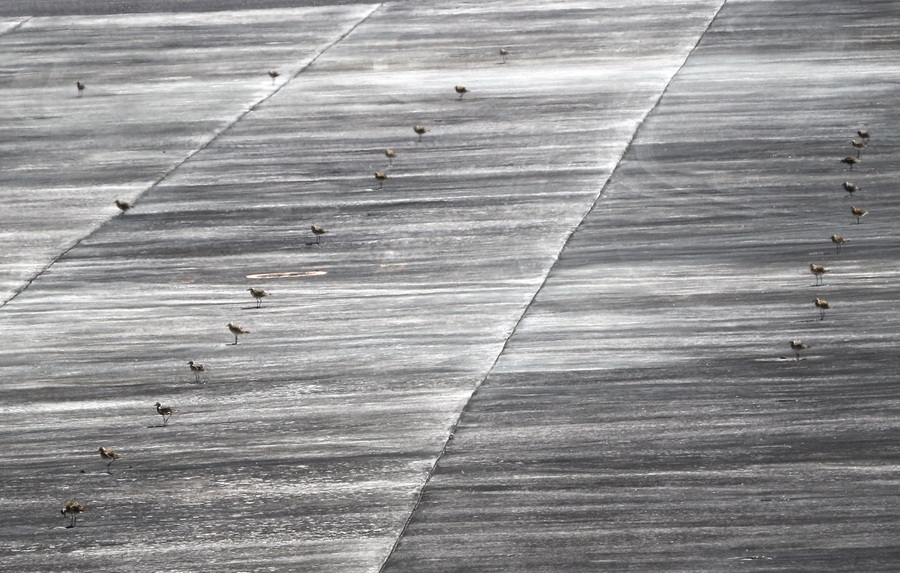
For reasons known only to the Kolea, the birds sometimes line up on the runway at Midway Atoll. © Courtesy Jonathan Plissner, USFWS
To answer a common question, it’s OK if you didn’t start counting in December. That isn’t a start date, but rather the earliest date to start a Big Count. We are asking for three counts anytime between December 1 and March 31. They can be 3 days in a row or 3 months apart. Three gives us the average number of birds in each area, but if you can only count once or twice, that’s still better than none. Please report whatever you have, wherever you did it. All data is useful.
It’s also OK if more than one person counts the same area, or if your area is not listed in my sign-up locations. The possible sites at http://bit.ly/2BFwVXG are my attempt to spread us out a bit, but they’re not written in stone. Let me know if you have an area populated by Kolea, and I’ll add it. My family, friends and I will count as many unclaimed sites as we can on Oahu as well as neighbor islands when it’s safer to travel.
Speaking of travel, Kolea expert Wally Johnson, based in Bozeman, MT, will be on Oahu February 23 – April 7 to continue his lifelong plover studies. The Hawaii Audubon Society will invite him to give us one of his popular Kolea talks while he’s here. Stand by for details.
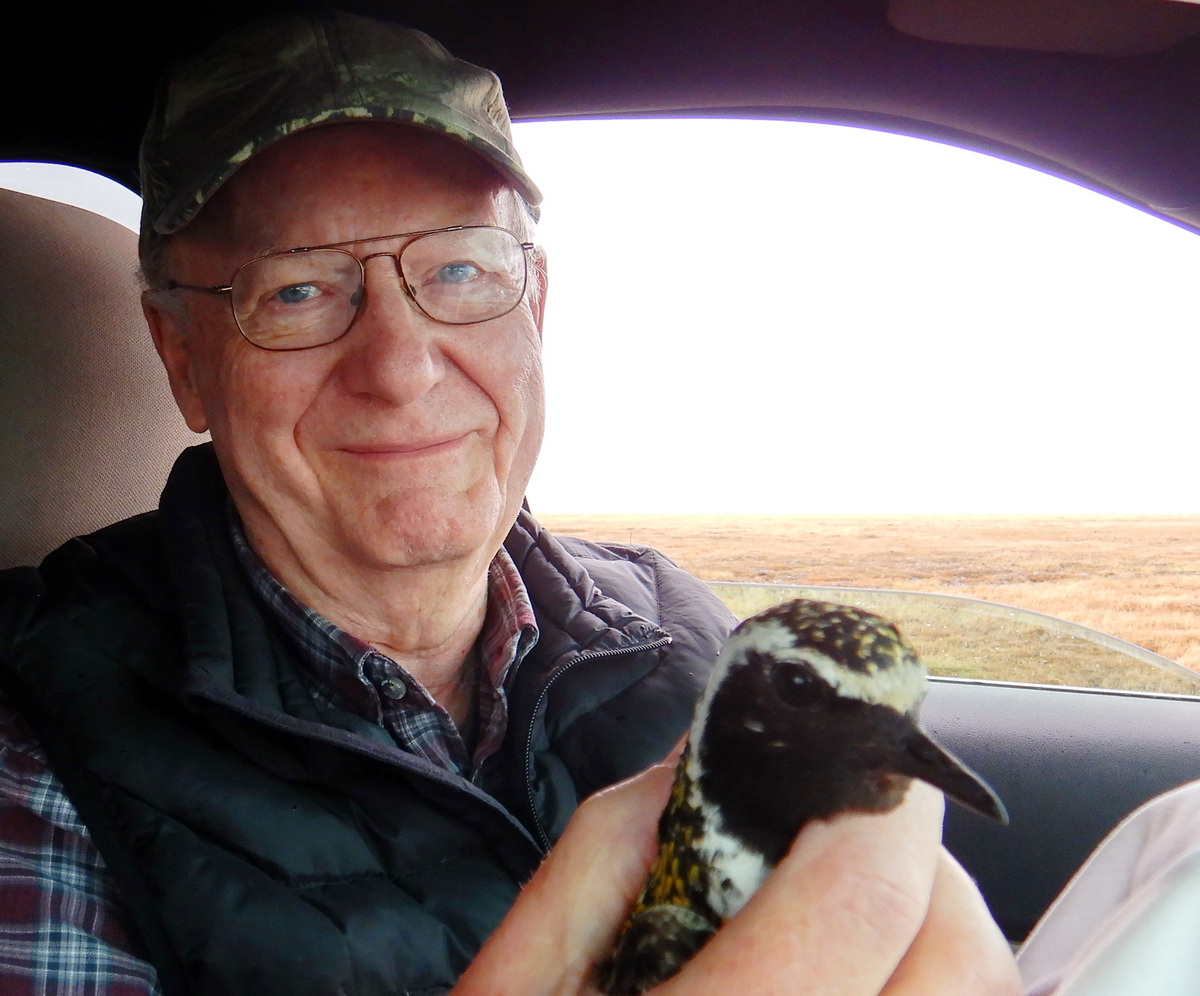
Dr. Wally Johnson with one of his best friends in Nome Alaska. Wally has been studying and admiring Pacific Golden-Lovers since the 1970s. © Susan Scott
Thank you for helping protect Hawaii’s Kolea by learning more about them. The birds, in turn, help us get outside walking, and in that, appreciating life in Hawaii. It’s mutualism at its best.
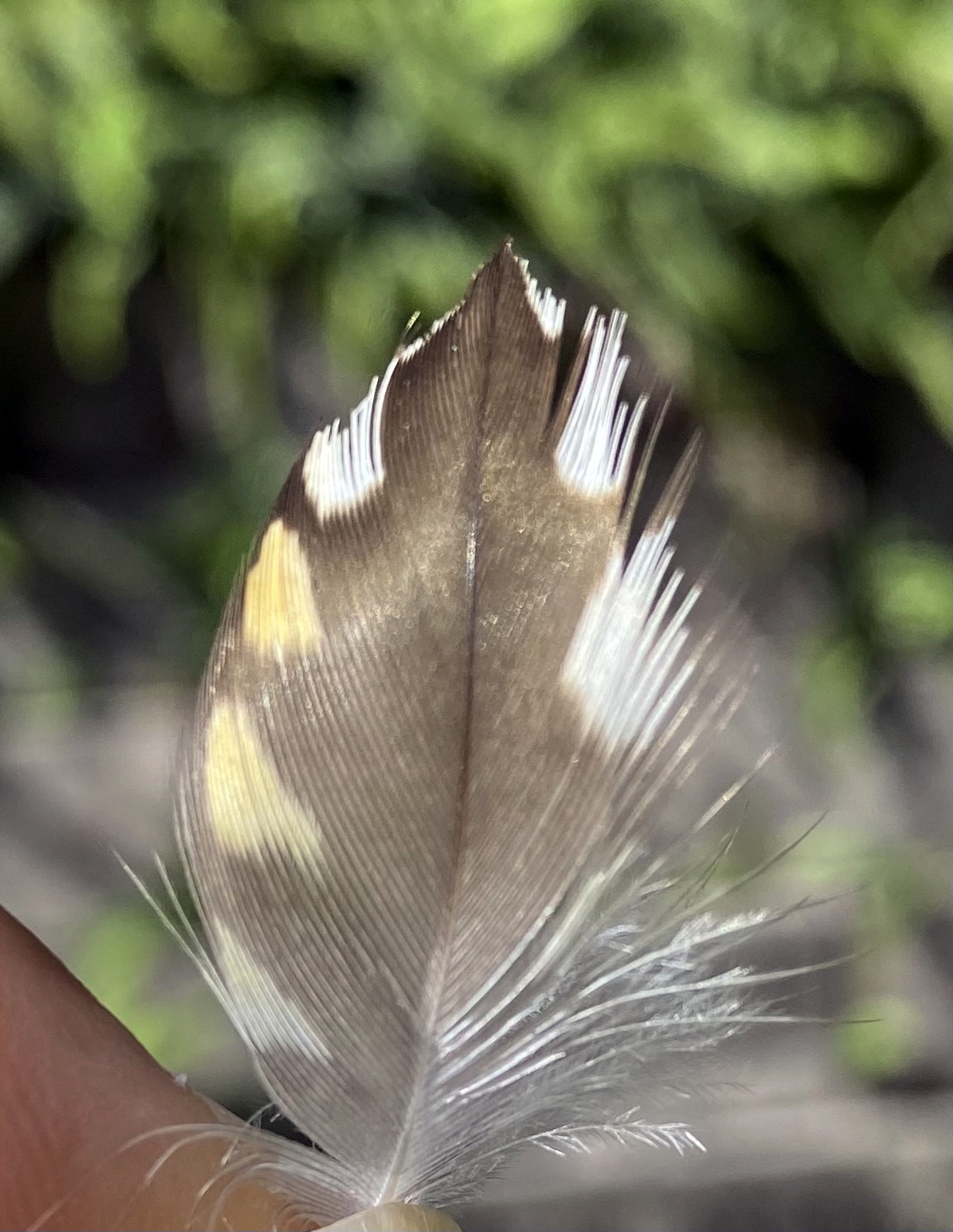
Kailua educator, Pua Kane, shared this photo of her treasure find, a Kolea feather.